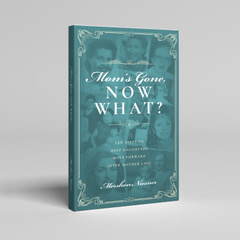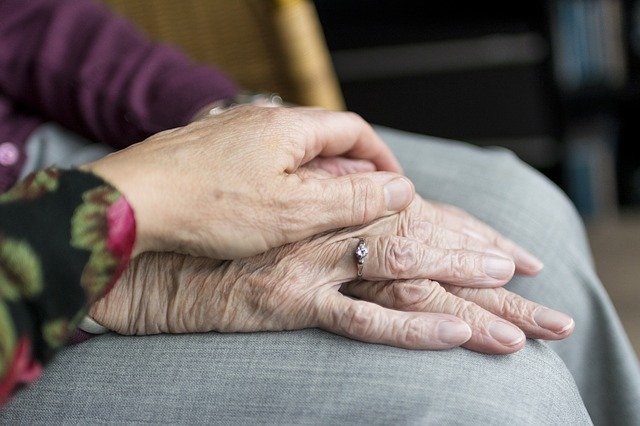Mershon Niesner has written a timely book for daughters dealing with the loss of their mothers through situations such as disease, violence, suicide, and other forms of loss, such as dementia. A thoughtful book that includes coaching questions with each chapter—steps designed to help daughters cope.
I’ll be back soon with more posts about a writer’s life, meanwhile, you can read a previous post by clicking the link here.
The Author: Mershon Niesner

Mershon Niesner was eight-years-old when her mother died. In addition to her early loss story, Mershon interviewed over fifty daughters.
Their stories give readers who have experienced teen or young adult loss, loss through homicide, abandonment, or Alzheimer’s disease a sense of camaraderie, insight into how to move forward and compassion for the experiences of others.
To learn more about Mershon, click on her name, photo, or any of the following links: Facebook – Life After Losing a Mother Blog
 The Book: Mom’s Gone, Now What? by Mershon Niesner
The Book: Mom’s Gone, Now What? by Mershon Niesner
An intimate, powerful, and inspiring guide by a woman who understands mother loss as a life-altering experience.
Mershon Niesner was eight-years-old when her mother died. In addition to her early loss story, Niesner interviewed over fifty daughters giving readers a broad perspective on mother loss. Stories and advice comes from daughters of teen and young adult loss, loss through homicide, abandonment, and Alzheimer’s.
Mershon writes from her heart as she shares over seventy years of mother loss experience. Readers come away with a sense of camaraderie, insight into how to move forward, and compassion for the experiences of others.
Niesner also supports readers as a Certified Life Coach by posing valuable coaching questions at the end of each step.
To buy the book, click the link: Amazon
The Interview with Mershon Niesner
Tell us about Mom’s Gone, Now What? How did this project come about?
Writing this book was a spiritual calling for me. It started with a nudge from Virginia, a ninety-one-year-old woman I met for the first time in the middle of my street in May 2017. She encouraged me to join a local writers’ group and insisted that I write a book. It was spring, a time for planting. Virginia turned over the soil of my life (quite literally) and planted the seed for my book.
Soon after meeting Virginia, I knew the topic for my book. I’d worked on a variety of life issues, including mother loss, for eight years in group therapy, participated in two motherless daughter support groups, had written topic-related poetry and letters. Mother loss had taken up much real estate in my psyche over the years. Now was the time to write a book about it.
My focus on mother loss surfaced because of my legacy of loss. My mother died when I was eight, her mother died when my mother was three. In addition to my early loss story, I interviewed over fifty daughters in order to give readers a broad perspective. The stories and advice in the book comes from daughters of early loss, teen and young adult loss, loss through homicide, abandonment, and Alzheimer’s.
What was your publishing experience like?
When COVID-19 hit in early-March, I was still querying agents with the hope of being traditionally published—which I had my heart set on. However, the pandemic made me realize, more than ever, that life can be short.
Also, because I was closing in on turning seventy five, I decided I couldn’t afford to continue down the long and uncertain path of traditional publishing. It sounds morbid, but I literally thought to myself, I don’t want to die and not publish this book. That’s when I decided to self-publish. I found a great designer and got the job done literally on the day of my 75th birthday, July 11, 2020.
During the process I had to get up to speed on ISBN, PCIP, SEO and a host of other technical issues. I also designed my own web site www.mershoniesner.com.
What would you like readers to take away from reading your book?
My hope is that readers will come away with a sense of camaraderie, insight into how to move forward after mother loss, and compassion for the experiences of others. As a Certified Life Coach, I pose coaching questions at the end of each of the ten steps as a tool for moving forward.
Launching a book in a pandemic is a crazy experience, what are you doing to promote your work?
First, I rewrote my marketing plan to reflect a COVID environment. The foundation of that plan is Zoom, Zoom, and more Zoom. I learned how to create a PowerPoint slide program to use on Zoom when I present to book clubs, women’s groups, and support groups. This makes my program more interesting that simply a talking head.
Since I’m unable to sign books in person, I’ve printed labels that I sign, personalize, and mail to those people who want a signed book.
I am putting my book in my local indie book stores but I’m not working on placement in other brick and mortar establishments like book chains, libraries, gift shops etc. right now. That will come later.
I have a large Facebook audience, a well-supported blog, and I’m a member of at least eight on-line motherless daughter and Alzheimer’s care groups to whom I will market.
Of course, my blog and web site will also be marketing tools.
What was the most challenging aspect of writing Mom’s Gone, Now What?
Learning about a whole new industry, major rewrites (thank goodness I had a good editor) and the frustration of not attracting an agent.
What are you working on now?
I’m about half way through writing a companion book entitled, A Year of Support For Motherless Daughters—365 Insights, Affirmations, and Life Coaching Questions. I’m taking some of the material from my blog, www.motherloss.blog, which I’ve been writing and sharing for over three years.
Final words of wisdom for other writers considering self-publishing:
It’s not as easy as you might think if you do it all yourself (as I did). I considered investing in an organization like LuLu or Outskirts Press but by the time I contacted them I was already too far down the road (my book had been thoroughly edited twice, I had cover art and an interior design) to make it financially worthwhile.
As they say, “The Devil is in the details.” Until I could figure them out, tiny glitches kept my book from publishing on KDP. It was frustrating and took a great deal of patience over about two weeks.
Having a very professional editor like Elena made all the difference. I was also happy with my professional designer. You need to hire excellent professionals if you self publish! (It was an absolute pleasure to work with you, Mershon!)
A few other upsides of self-publishing, besides getting it done in a timely way, are having complete control of your work. I “broke the rules” on my cover design but it is exactly what I wanted. I’m glad I didn’t have to change my title and I’m pleased that I didn’t have to sacrifice content that was important to my message and mission.
Such a pleasure to have you on my blog today! This is a wonderful and valuable book, I wish you every success!
Header photo by SabineVanerp on Pixabay. Click the link here for more information.




